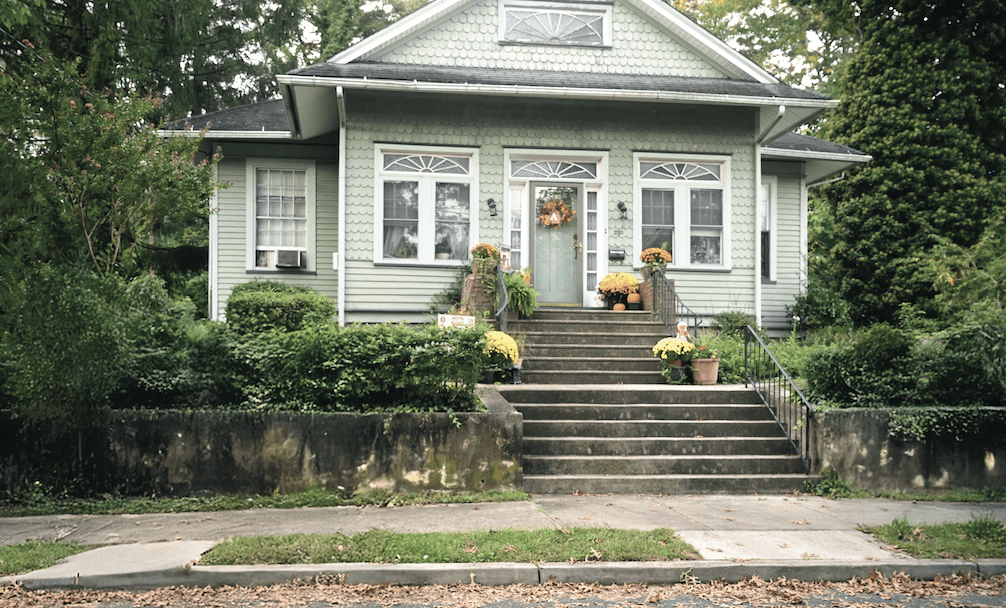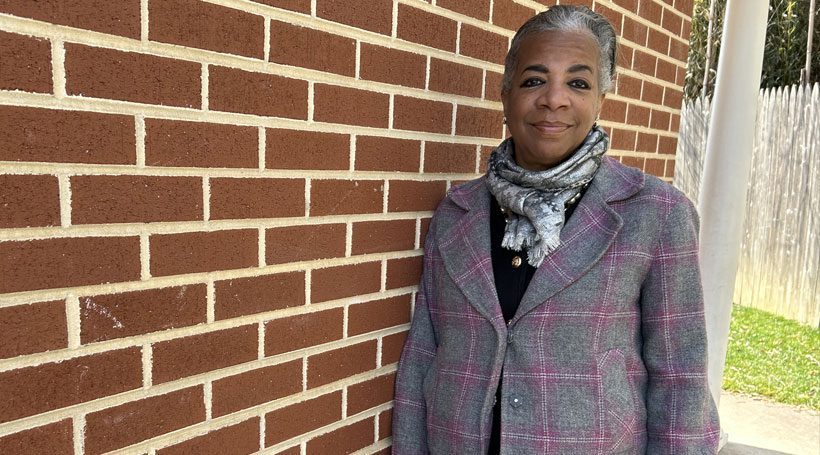Jacquelyn Johnson Mann Roberts was a child when she became part of a historic moment – the desegregation of Haddonfield schools in 1948. With the closing of Colored School No. 2 on Lincoln Ave., she and her Black classmates walked into Central Elementary School for the first time under the watch of armed guards. No violence erupted, but the presence of those officers sent a clear message: change, even when necessary, is not always welcome.
“That’s what I loved about Haddonfield,” Roberts later reflected. “There was change. It was a wonderful thing.”
Still, moments throughout her childhood reminded her that she was seen as different. In one instance, a teacher told the class, “We know where Jackie’s ancestors came from — Africa.” The rest of her classmates, all white, had been asked where their families were from. Being told instead of asked stung, and she realized the history taught in school would not include her own.
A digital map, available on the Haddonfield Library website, details locations such as a barbershop that once served as a hub for community news and Miss Ross’ Convenience Store…
Roberts’ story is one of many in Preserve: Narratives from Historic Haddonfield’s African American Community, a three-part anthology documenting the lives of the town’s Black residents. The first volume, published in 2023, features oral histories from 10 elders between the ages of 70 and 100. Two subsequent volumes focus on the experiences of younger generations, including residents in their 20s. Preserve is part of The Preserving Black Haddonfield History Project, an initiative dedicated to documenting and preserving the stories of Haddonfield’s Black residents.
Haddonfield has long celebrated its colonial past, but its Black history has not been widely acknowledged – until now, says Adrienne Rhodes, the project’s founder and acting administrator.
Rhodes, a 1978 Haddonfield Memorial High School graduate, often opens her talks about the project with a question: “Do Black people live in Haddonfield?” She doesn’t wait for an answer.
“Yes, we do – since the 1700s.”
Though early Quakers, including the town’s founder Elizabeth Haddon Estaugh, enslaved people, they later became leaders in abolition. By 1776, the Haddonfield Quaker Meeting had freed the last of the enslaved people held by its members, and by 1790, no Quakers in town were slaveholders, Haddonfield historians Douglas Rauschenberger and Katherine Tassini note in the Preserve foreword.
Even after World War II, segregation remained a reality. In 1947, Haddonfield’s own native son, Gov. Alfred E. Driscoll, led the charge to desegregate New Jersey schools, and the township followed suit the next year.
Yet racial divisions persisted. Black students were often steered away from college by school counselors, according to elders’ accounts. They were also largely excluded from activities like cheerleading and school dances as interracial groups mostly kept to themselves.
The Preserving Black Haddonfield History Project, led by Haddonfield Memorial High School alumni, educators and local historians, was created to ensure these stories are no longer overlooked, says Rhodes.
For much of the 20th century, Black life in Haddonfield centered around “The Point,” a neighborhood of homes, businesses and churches that was the heart of the African American community. The 1950 Census recorded 234 Black residents in Haddonfield – 2.2% of the population – and at least 219 lived in and around The Point. No white residents were recorded there at the time.
Over the years, deaths, rising property taxes and societal pressures led many Black families to sell their homes and relocate, says Rhodes. Today, few properties in the area remain Black-owned, and just 1.2% of Haddonfield residents identified as Black in the 2020 census.
A 14-stop, self-guided walking tour explores key sites from this history. A digital map, available on the Haddonfield Library website, details locations such as a barbershop that once served as a hub for community news and Miss Ross’ Convenience Store, which also housed a TV repair shop and was owned by relatives of heavyweight champion Jersey Joe Walcott. Oral histories suggest an African prince once lived there while attending Rutgers University-Camden.

A stop on the historic walking tour is the building that once housed Douglass Avenue Public School #4 for Coloreds
Several stops are now part of New Jersey’s Black Heritage Trail. In 2023, historical markers were installed at Mt. Olivet Baptist Church, a spiritual and social hub for Black residents since 1891, and the Colored School No. 2. A third marker, honoring the historic neighborhood, will be placed at Ellis and Potter Streets and unveiled this Juneteenth.
For Rhodes, whose family has lived in Haddonfield since the 1840s, this work is deeply personal – her great-great-grandfather was a Civil War hero. And the oral histories preserved are of families she knows well.
“Their stories of triumph over childhood trauma, physical disabilities, homophobia, racism, self-doubt and other adverse conditions should provide readers in need with the courage to build their best life against the odds,” Rhodes writes in Preserve.
Among those featured is Donna Steward-Cruz, 61, who grew up between two worlds. She lived in neighboring Lawnside, a historic free Black town founded by formerly enslaved people, but spent most of her time in Haddonfield, where her grandparents owned Miss Ross’ Convenience Store. She recalls her grandmother hosting high tea for her and her friends, where they enjoyed cucumber sandwiches and learned proper table manners as pre-teens.
As a child, she struggled with dyslexia, but in Haddonfield’s schools, teachers recognized her learning challenges and gave her the support she needed. This encouragement made a lasting impact, shaping her confidence and academic success, she says.
Later, after her father died, she had to transfer to high school in Haddon Heights, where there were more Black students. There, she felt the sting of being told she “sounded too white” and was “all proper.”
Today, Haddonfield and surrounding-area high school students have played a critical role in preserving these stories, conducting interviews, writing the narratives and working with the school’s digital arts department to create multimedia presentations, which can also be found on the Haddonfield Library website.
“Our highest hope is to do more than simply recall private memories,” Rhodes says. “We want to facilitate dialogue, increase intergenerational and interracial engagement, and strengthen the entire community.”
For many, recognition of this history is long overdue. Roberts says her mother understood that long before history books acknowledged it.
One day, Roberts’ mother walked into the segregated movie theater, sat in the whites-only section, and refused to move. A few weeks later, the theater closed for good.
Years later, Roberts herself would break barriers, becoming the first Black woman to work in an administrative position at Haddonfield Borough Hall. Initially apprehensive, she found she was welcomed with open arms.
“They treated me as one of their own,” she says.
Despite the struggles, Roberts’ love for Haddonfield remains steadfast.
“No matter how bad things were, it was my home,” she says. “And it will always be my home.”














